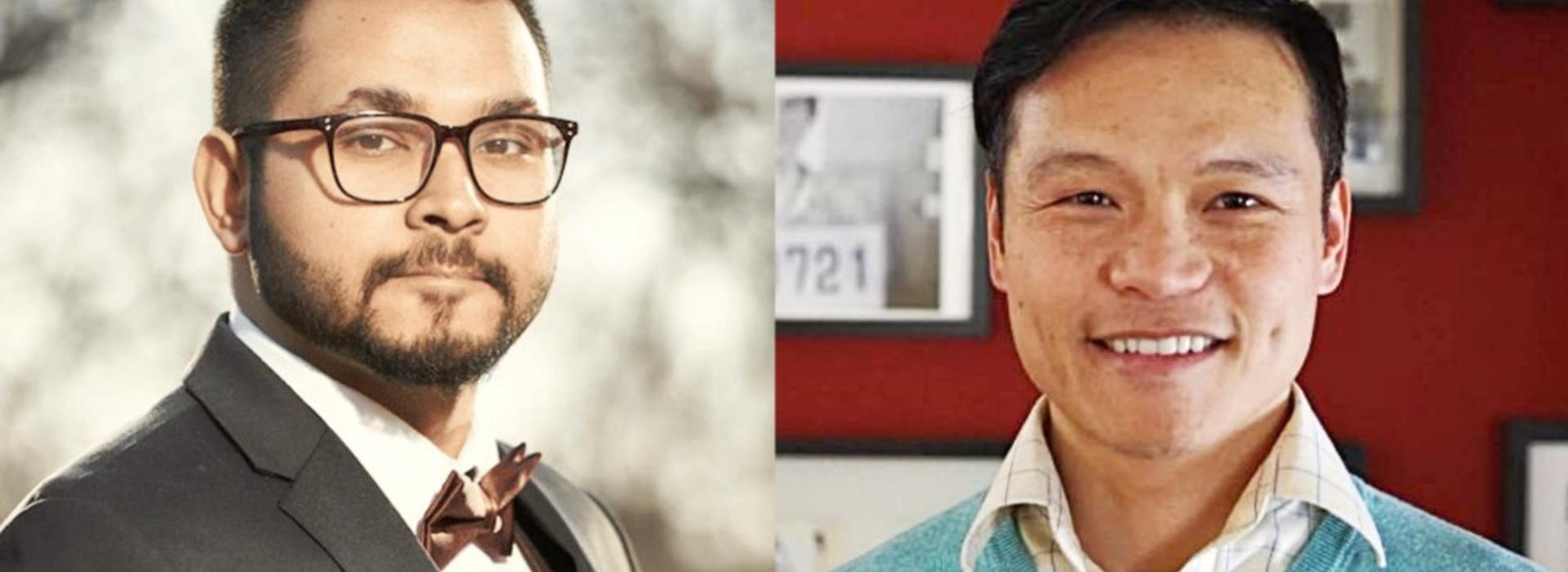
Community Health Fairs Aim to Address Access to Healthcare, Provide Better Training
In August 2021, Koushik Paul, a member of the University of Minnesota Medical School’s Class of 2025, shared how he has been focusing much of his medical education on addressing health inequities across the state of Minnesota. With his mentor Cuong Pham, MD, an assistant professor in the Department of Medicine, Paul has been continuing this work to facilitate local health fairs in partnership with the Little Earth community in Minneapolis’ Phillips neighborhood.
The partnership between Little Earth and the U of M Medical School has been years in the making, Dr. Pham said, noting, “Our relationship with Little Earth started about five years ago with the goal of addressing the high rates of substance overdose among Little Earth community members, which is still an important piece of the community health fairs we’re planning now.”
In the summer of 2021, Little Earth worked with Paul and Dr. Pham to facilitate roundtable discussion sessions with different age and interest groups about addiction care in their community. They also provided addiction prevention and overdose response training for community members.
“I truly think it was a hit,” said RoseMarie Roberts, a Little Earth community organizer and cultural services liaison. “I love that the people in the community got trained on what to do during an overdose from actual providers. It is helping a lot of people out.”
Given the community’s response to the opportunity to connect with healthcare students and professionals, Paul, Dr. Pham and Little Earth leaders agreed that it presented an opportunity to expand these programs to address additional health issues Little Earth community members face.
This is part of the broader, shared purpose of the Medical School’s partnership with Little Earth, which is to support Little Earth community members’ access to healthcare.
“Social determinants of health like work, child care needs and transportation make it difficult for community members to come to the clinic or hospital, so there is a clear need to start bringing healthcare to communities instead of the other way around,” Dr. Pham said.
By planning community health fairs in tandem with community events, Little Earth leaders and the Medical School have been able to bring out medical and dentistry students, faculty and the U of M’s Mobile Health Initiative to connect with community members of all ages. Jolene Jones, an Elder and community organizer in the Little Earth community, noted that “the biggest positive has been the youth. Once youth come in, they bring their other family members along and it becomes a family thing."

As part of the events, U of M health science students, faculty and clinicians have provided hands-on training for CPR and Narcan administration in addition to supplying Narcan kits to Little Earth community members for emergency use.
“We have partnerships with different organizations that are able to provide Narcan to Little Earth on demand. It’s great that we can continue to help address Little Earth’s health concerns while building relationships across communities,” Paul said.
Additionally, the Mobile Health Initiative has been able to provide dental care, distribute wound care supplies, vitamins and other basic medications for Little Earth community members to have on hand.
“It was truly amazing to have doctors and dentists come to us so that we could talk to them at a place where we were comfortable,” Jones said.
“Healthcare has been focused on having patients come to established clinics to receive the resources and care they need, which ignores the barriers they often face,” Dr. Pham said, “So when we can go to communities themselves, it makes it so much better for them.”
Community engagement opens a two-way street
Students and clinicians who participate in the community health fairs have just as much responsibility to educate community members as they do to learn from them, Dr. Pham noted, saying, “One thing students and clinicians need to continue learning is how to provide trauma-informed care.”
Paul agrees, emphasizing its importance when working with “all communities and specifically Native communities because of the historical trauma they’ve endured.”
Cassie Holmes, a Little Earth community health representative, noted her own appreciation for this purposeful exchange. “I love how doctors came from not only hospitals and clinics but from treatment programs, too, to hear about how community members feel about racism in the medical system and that the doctors were willing to learn and listen,” she said.
“One of the key reasons it is important for clinicians, residents and medical students to participate is for us to learn about and experience the community’s strengths,” Paul shared. “Despite going through all the health inequities you can think of, there are cultural strengths that keep the community together. Once we engage those strengths in conversations and make them part of our interactions with patients, we can better address those inequities.”
Looking ahead
Paul, Dr. Pham and Little Earth leaders hope to make community health fairs regular, go-to events for their community.
“We’d love to make these events happen every month or every other month,” Dr. Pham said, emphasizing that “these programs help provide better healthcare access for communities and better training for future clinicians.”
“As a land-grant university, we have to meet our communities where they are,” Paul said, “Which can go a long way in improving patient outcomes and trust among the communities we serve.”